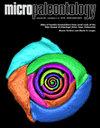Moncharmontia De Castro 1967, benthic foraminifera from the middle-upper Cenomanian of the Sarvak Formation of SW Iran (Zagros Zone): a CTB survivor taxon
IF 1.6
4区 地球科学
Q3 PALEONTOLOGY
引用次数: 13
Abstract
Moncharmontia apenninca (De Castro 1966) is widely reported in the Upper Cretaceous (Turonian-Campanian) shallow-water successions of the Neotethyan realm (e.g., Italy, Croatia). With its "First Appearance Datum" (FAD) in the lowermost Turonian, it is considered a newcomer taxon in the aftermath of the Cenomanian/Turonian boundary (CTB) extinction event, and therefore a member of the Upper Cretaceous Global Community Maturation Cycle. Its common presence in the middle-pro parte upper Cenomanian Sarvak Formation and time-equivalent strata in Mexico (Valles-San Luis Potosi Platform) document that it represents a CTB extinction survivor taxon like Dicyclina, Nezzazata, Reticulinella and several others. The different local "FAD's" of Moncharmontia might possibly be linked to latitudinal differences, i.e., an earlier evolution of the species in the near-equatorial area (Mexico, Iran) compared to the low-middle latitudinal occurrences in the peri-Mediterranean realm (e.g., Italy, Turkey).Moncharmontia De Castro 1967,伊朗西南部(Zagros区)Sarvak组Cenomanian中上段底栖有孔虫:一个CTB幸存分类群
Moncharmontia apenninca (De Castro 1966)在新特提斯王国(如意大利、克罗地亚)的上白垩纪(Turonian-Campanian)浅水序列中被广泛报道。由于其“首次出现基准点”(First Appearance Datum, FAD)位于最底的Turonian,因此被认为是Cenomanian/Turonian边界(CTB)灭绝事件后的一个新分类单元,因此是上白垩纪全球群落成熟周期的成员。它在墨西哥(vales - san Luis Potosi台地)的上Cenomanian Sarvak组中后期和时间相当的地层中普遍存在,表明它代表了CTB灭绝幸存者的分类群,如Dicyclina, Nezzazata, Reticulinella和其他几个。Moncharmontia地区不同的“FAD”可能与纬度差异有关,即,与地中海周边地区(如意大利、土耳其)的低中纬度事件相比,近赤道地区(墨西哥、伊朗)的物种进化时间更早。
本文章由计算机程序翻译,如有差异,请以英文原文为准。
求助全文
约1分钟内获得全文
求助全文
来源期刊

Micropaleontology
地学-古生物学
CiteScore
3.20
自引率
6.70%
发文量
18
审稿时长
>12 weeks
期刊介绍:
The Journal of Micropalaeontology (JM) is an established international journal covering all aspects of microfossils and their application to both applied studies and basic research. In particular we welcome submissions relating to microfossils and their application to palaeoceanography, palaeoclimatology, palaeobiology, evolution, taxonomy, environmental change and molecular phylogeny. Owned by The Micropalaeontological Society, the scope of the journal is broad, demonstrating the application of microfossils to solving broad geoscience issues.
 求助内容:
求助内容: 应助结果提醒方式:
应助结果提醒方式:


